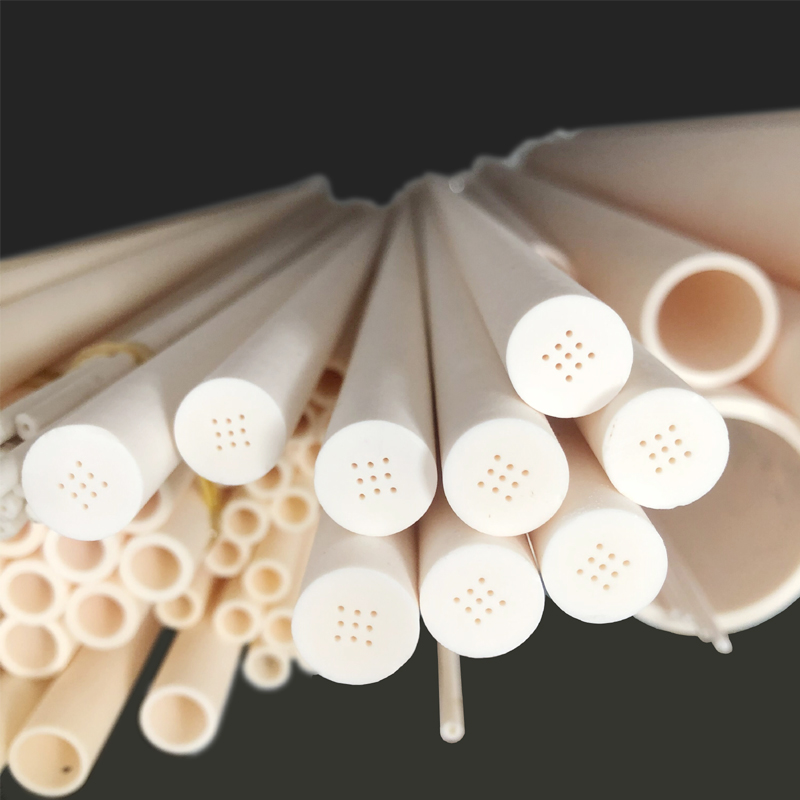Alumina ceramic is an advanced ceramic material with alumina (Al₂O₃) as its main component. It is made through artificial synthesis, precise design and accurate preparation, and exhibits excellent properties. It has properties such as high hardness, wear resistance, corrosion resistance and high temperature resistance, and is widely used in machinery, electronics, medical treatment, food, chemical industry and other fields.
Alumina ceramic products come in a wide variety and have extensive applications.
Alumina ceramics have attracted much attention due to their excellent performance and wide range of applications. From purity and microscopic morphology to electrical properties, alumina ceramics have demonstrated unique advantages, providing diversified solutions for different industries.
1. From the perspective of purity:
Alumina ceramics exhibit different physical and chemical properties due to their varying alumina contents, providing abundant options for product research and development. High-purity alumina ceramics (with an Al₂O₃ content of 99.9%) possess excellent transmissivity (with a transmission wavelength of 1–6μm), high sintering temperature, and stability, making them suitable for the manufacturing of high-precision electronic devices. In contrast, ordinary alumina ceramics, with their wear-resistant and corrosion-resistant properties, meet the needs of general industrial applications.
2. From the perspective of compactness:
Through the high-temperature sintering process, alumina forms a dense and uniform crystal structure. This structure endows it with high hardness, high melting point and excellent chemical stability. Products used in the electronic field must have good density to ensure excellent flexural strength and wear resistance.
3. From the perspective of functionality:
Alumina porous ceramics, as a high-performance ceramic material, feature a uniform pore size distribution and interconnected internal structures, allowing fluids or gases to pass through smoothly. They possess high adsorption efficiency and can maintain strong vacuum force in high-temperature vacuum environments without being easily blocked. This adsorption property over partial areas makes them an ideal choice in many specific application scenarios. They can maintain the stability and reliability of their performance even in extreme temperature, pressure, or chemical environments, which renders them an ideal material in high-precision and high-demand fields such as electronics and panels.
4. From the perspective of electrical properties:
Classified by their applications in terms of electrical properties, alumina ceramics can generally be divided into the following two categories:
(1) Alumina insulating ceramics:
Alumina ceramics, as a high-performance ceramic material, have become an indispensable part of the electronics industry due to their high electrical insulation performance, excellent mechanical strength, and outstanding thermal stability. In conventional electrical applications, this ceramic material can effectively insulate electric current, ensure the stable operation of electronic devices, and still maintain the stability of its performance in high-temperature environments.
(2) Alumina antistatic ceramics:
In fields such as electronics and optics, the accumulation and discharge of static electricity can cause severe damage to equipment, and even lead to equipment failure. Antistatic alumina ceramics, however, can effectively prevent the accumulation and discharge of static electricity, thereby protecting electronic equipment from static damage. For example, in the manufacturing process of electronic devices, the use of antistatic alumina ceramics can effectively prevent static electricity from damaging the internal circuits of the equipment; in the manufacturing of optical instruments, the application of this material can protect optical components from the impact of static electricity, ensuring the normal operation of optical systems.
To sum up, alumina ceramics, with their excellent physical, chemical, and electrical properties, play an irreplaceable role in numerous fields. From high purity and high density to porous structures and electrical characteristics, the diversity and customizability of alumina ceramics make them an ideal choice for technological innovation and industrial applications.


